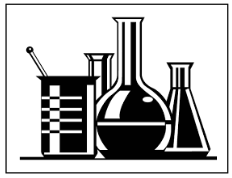

Potential issues:
- Exposure to water.
- Exposure to the oxygen in the air
- Extreme heat or cold temperature swings.
- Biological contamination (Bacteria, fungi, and mold)
- Low quality and contaminated fuel mixed with clean fuel to solve the problem.
- Ultra-low sulfur diesel (ULSD) has a greater tendency to oxidize than higher sulfur diesel since sulfur is a natural antioxidant.
Temperature/ Exposure to Oxygen
- Wax crystals form when fuel is not prepared for use in cold temperatures, and those crystals will clog fuel filters.
- Oxidized fuel is more acidic and forms larger molecules (gums, varnishes) that will fall out of solution and plug filters. Oxidation is caused by exposure to air in time. This process gets worse with more extreme temperature exposure (hot days/direct sun on tanks, and colder nights).
- Biodiesel – Diesel blends tend to oxidize faster than Diesel alone.
- Acidified fuel can corrode the tank which can lead to clogged filters, unnecessary generator component wear and downtime for the company.
Water
- Free water pooled at the bottom of diesel tanks can be drained off, but dissolved water will need to be run through water-absorbing filters.
- Water in the fuel can lead to biological growth.
Biological growth
- Bacteria, fungi, and mold can grow in diesel fuel and will clog filters with growth. Existing growth will need to be filtered out and treated with chemicals.
Other contaminations
- Other tests like distillation can show if there is an appreciable amount of another fuel like gasoline or a chemical solvent.
Sampling
Taking a representative sample is critical in understanding the nature of your fuel.
Different factors can determine where you sample:
- Sampling dead bottom can give an idea of what water, sediment, and biological growth you have in the tank.
- If you have water in the tank, sampling just above this water layer will give you an understanding of if your fuel is starting to oxidize and, also if it has biological growth.
- However, if you suspect that your diesel has been contaminated with gasoline, for example, it would be better to sample at the top of the tank (since gasoline is less dense).
- Taking an Upper, Middle and Lower sample might be appropriate for some tanks while taking an “All Level” sample might work for others.
The following is our recommended monitoring program:
Monitoring
Make Fuel Testing Part of your Maintenance Program
- Diesel fuel testing can benefit any fuel quality assurance program by identifying problems so the fuel can be salvaged.
- The best approach is to monitor the fuel yearly (larger group of tests) with a check-up on critical ones every three months.
Yearly Monitoring
Main sample (Sample taken above water layer (if one is present)
Cetane Index (ASTM D976) – Distillation (ASTM D86 or D7345) – Sulfur (ASTM D5453 or D7039) – Bacteria and Mold/ Fungi (D6469) – API/ Density (ASTM D4052) – Cloud Point (ASTM D5773) – Pour Point (ASTM D5949)
Sediment and Water (ASTM D2709) – Oxidation Stability (ASTM D7545) Flashpoint (ASTM D93).
Bottom sample(Sample taken at “dead bottom”)
Visual analysis (ASTM D4176)
Bacteria and Mold/ Fungi (D6469)
Sediment and Water (ASTM D2709)

Quarterly Monitoring
(Sample taken at “dead bottom”). Visual analysis (ASTM D4176) –
Sulfur (ASTM D5453 or D7039) – Sediment and Water (ASTM D2709) – Oxidation Stability (ASTM D7545) – Bacteria and Mold/ Fungi (D6469)
Other tests like Particle Count (ASTM D7619) and Karl Fischer Water Content (ASTM D6304) are available upon request.
Fuel, like the generator itself, needs maintaining, testing and continual monitoring. We can ensure that your fuel is viable and keeps your tank clean and generator running smoothly.
Be proactive with your fuel.
